In today’s edition of Legion’s Landing, Kristen takes a look at a type of card that seemingly goes in and out of vogue. This week, she argues that it’s time to dig out a Hate Bear or two.
It’s taken a little adjustment for us all recently, and part of that adjustment for me is publishing a little later this week. I hate to miss my usual slot, but thanks for bearing with me. Puns aside, we’re all facing struggles and challenges with the pandemic, and mental health is no exception. We’ve universally relaxed our publishing schedule on the site to allow our writers the time to look after their families and recharge their energy in order to focus on what’s important, while at the same time committing to our usual quality and frequency to keep our readers entertained and informed during these tough times.
With that out of the way, shall we cheer ourselves up with a little EDH talk?
The Hate Bear
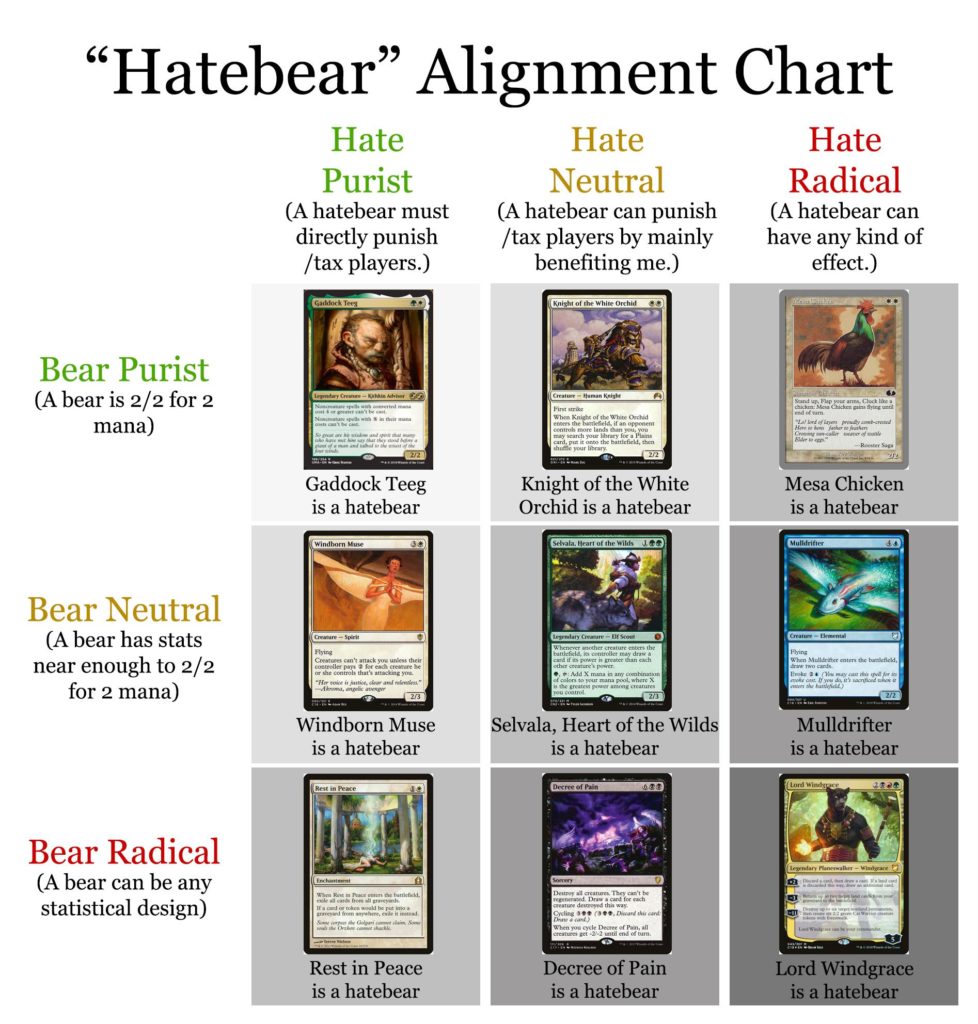
Example chart – Credit to @Spice8Rack
A hate bear, in magic, is roughly defined as bearing the following qualities:
- A 2/2 statline, or near enough, for the converted mana cost of the card.
- An ability or static effect that hinders, taxes, or otherwise inconveniences an opponent.
- Usually fairly low cost—though there are exceptions.
Generally speaking, a Hate Bear fits that definition, as can be seen in such classic examples as Thalia, Guardian of Thraben, Grand Abolisher, and more recently, Hushbringer; though as the above chart makes clear, the lines are blurry if they are even defined at all.
Hate bears are popular in many formats, with the most popular and widely recognized application of them in eternal formats like Legacy and Modern. Death and Taxes is the premier hatebear strategy, and in addition to Thalia, plays cards like Spirit of the Labyrinth, Containment Priest, and Sanctum Prelate. But what about in Commander?
Commander Hates Bears
The pervading issue with playing Hate Bears in Commander is that the format generally hates bears. By that, I mean that they just don’t have the impact that higher cost cards have, and are quickly outclassed. What’s more, with most decks packing boardwipes that they’re happy to fire off around turns four to six, the card investment you’d put into hate bears never really feels very secure. As a consequence, it’s a risky strategy, particularly with the social aspect on top. People don’t like being told they can’t do things in EDH, and so you’ll quickly earn the ire of your opponents for cramping their style. Being repeatedly swung at, or focused on, isn’t fun either, and so hate bears are a pretty divisive option.
This can be gotten around in a couple of ways. Firstly, by playing Commanders that reward you for playing smaller bodies, like Alesha, Who Smiles at Death, who can frequently bring back your downed bears from the brink. An Alesha build revolves around keeping bodies from staying dead as long as they’re pretty small, and when you throw cards like Sun Titan and Sevinne’s Reclamation into the mix, a support framework does emerge. Though Alesha leans more into combat and combos, hate bears can easily be included.
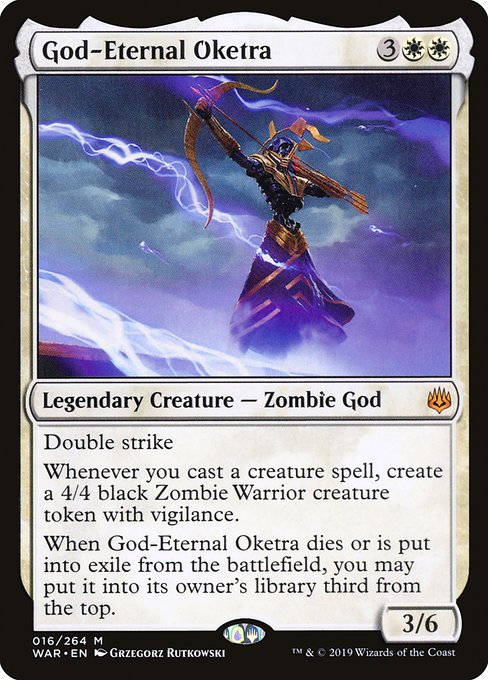
Another great general for a hate bear deck is God-Eternal Oketra. Oketra gives you a 4/4 Zombie with Vigilance whenever you cast a creature spell, so jamming as many creature spells as possible is the goal. Playing lower cost cards helps with this, and so hate bears are a popular inclusion in such a deck. Whilst Oketra is good, she doesn’t get around the issue of investing your hand onto the board. Even if you do get more bang for your buck, you’ll likely be left reeling after a boardwipe if you’ve emptied your hand.
The only real way to get around this is to draw more cards. Selesnya is one of the most popular color combinations for playing hate bears, and it’s easy to see why: being in green means turning those creatures into cantrips. As well as gaining access to cards like Dryad Militant, Destiny Spinner, and Collector Ouphe, adding green can give you both ways to draw cards (Guardian Project, The Great Henge, Beast Whisperer) and search out what you need (Eladamri’s Call, Captain Sisay).
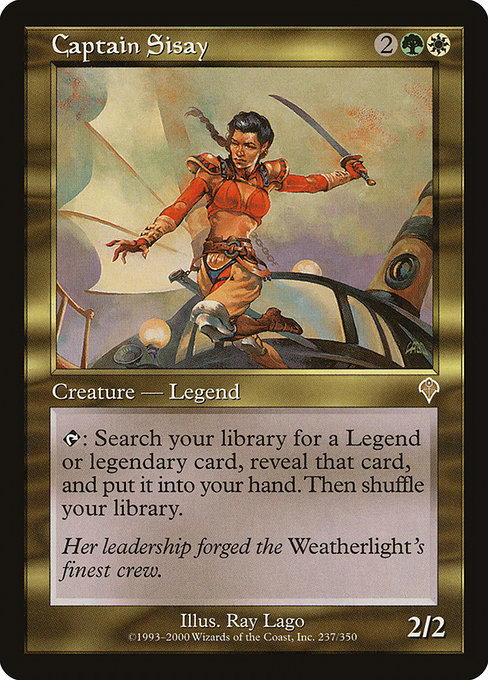
For that reason, Captain Sisay is one of the most popular choices for a hate bears deck. Being able to search out Thalia, Heretic Cathar and Gaddock Teeg is one thing, but being able to dig out stax pieces like God-Pharaoh’s Statue on top is the icing on the cake.
Hate Bears aren’t only a good build around though, and I’d argue that really, they can shine within the shells of other decks just as well (and sometimes, better—splashing for a hate bear is often going to draw you more ire than sitting down with a deck full of them). So, which ones should you be looking to try out?
Hate Bears You Should Try
I think that Hate Bears are currently in a pretty good place, and I think we’re probably happy to reconsider their place in a deck. Generally speaking, games of Commander are getting faster these days, and with the focus on playing so many value engines and ramp cards, hate bears are primed to throw spanners in the works. What’s more, they’re a great magnet for removal, and can soak up fire that would otherwise hit your more important game pieces. Here’s a run down of what I think is worth having a look at going forward:
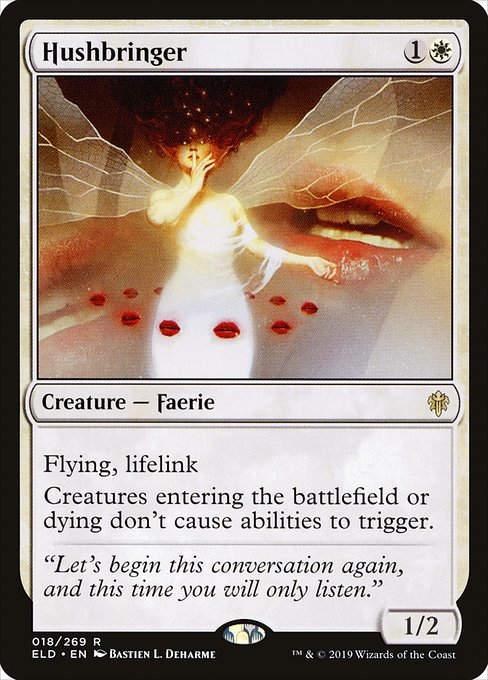
“Yarok players everywhere HATE this one trick!”
Hushbringer has never been more relevant, and that’s saying something, seeing as it’s only just entered the format. Being able to stop decks like Yarok, the Desecrated, Golos, Tireless Pilgrim, and Teysa Karlov from functioning is a great floor, and the ceiling just gets better. With the right sequencing, you can get your triggers before casting this. It’s not the end of the world to run this in a deck with your own ETB effects given it’ll likely eat removal before long, but just be aware that you may want to go for something like Dawnbreak Reclaimer or Bruna, the Fading Light over Karmic Guide.
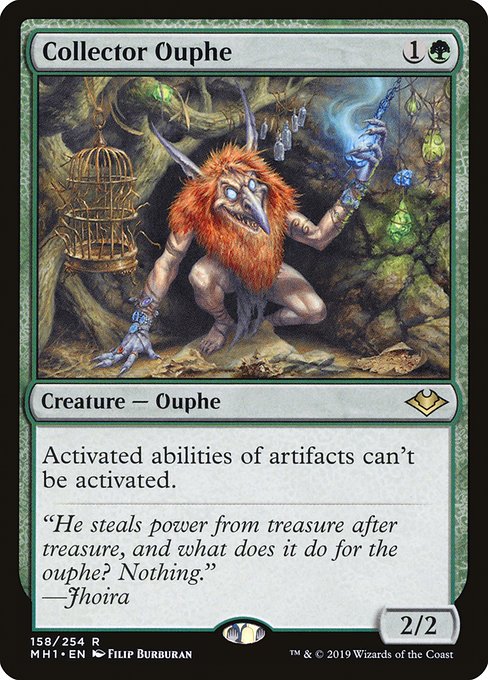
“OUPHE!”—Breya, the Etherium Sculptor, physically repulsed by this absolute gremlin.
Collector Ouphe is pretty high on the list of cards that Green didn’t need, but got anyway. I’m probably not wholly justified in saying that, given its application in Modern, but for Commander at least, giving the color that ramps out lands a way to halt decks reliant on mana rocks is a little bit much. I’d probably save this one for more high end decks, but honestly? It’s pretty gosh darn good, and can be tutored for with ease. Green Sun’s Zenith for X=2 is all you’ll need.

“Aghhhhhhhhh!”—Our titular Shōnen hero, charging up to annihilate his foes with a suspicious lack of interruption.
With the window to close games up to a whole turn quicker than it was, Grand Abolisher is an excellent way to ensure nobody can interfere with your strategy. Like with the previous two cards, it is likely to eat removal, but even that’s not the end of the world, as it’ll mean one less tool for your opponents to rely on. Being able to complete your turn without interruption can often be game winning, and for colors without access to interaction on the stack to prevent blow outs, Grand Abolisher is a great investment. In Green, you could also look at Dosan, the Falling Leaf.
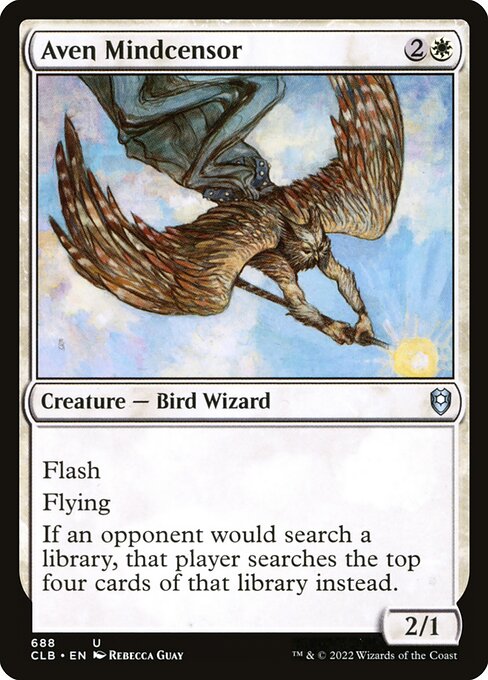
“Ah crap, I already started searching for this fetchland. What now?”—Jared, who never waits for responses and “forgets” about the stack
The super disruptive Bird Wizard returned to us during Amonkhet, and I believe he should return to your EDH decks too. I’ve always been a big advocate for cheap creatures with evasion that can wear things like Sword of the Animist. Whilst in the past I’ve loved a good Selfless Spirit, I’m beginning to find space in my lists now for cards like Aven Mindcensor and Hushbringer. Limiting your opponents library searching can really slow down decks trying to go off, and can often be enough to slow a green deck that relies on cards like Cultivate long enough for you to get into the game.
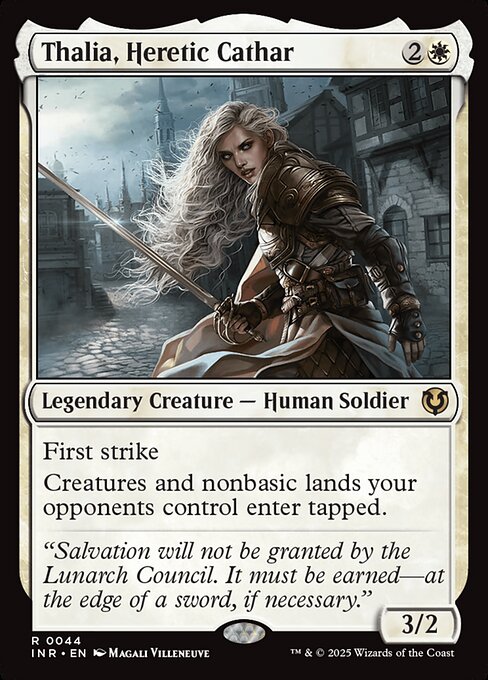
“Wait, let me read that again. So it’s not Blind Obedience?”—Everyone, everywhere.
Thalia, Heretic Cathar trades in artifacts coming in tapped for nonbasic lands. Arguably more annoying to some decks, and less to others, the important part is that she still makes creatures come in tapped too. First strike gives her good blocking and attacking abilities in a pinch, but we’re most enthused about her punishing greedy manabases. Loxodon Gatekeeper goes the full hog and offers Kismet on a stick; but for four mana, I’d rather play a harder to remove enchantment—the Elephant will trigger a board wipe most of the time.
Really, the attraction to running these cards is to slow things down a little. They won’t win games outright, but they can do a lot to buy you the time to get set up. There are a bunch more great hate bears you could be running, but I can’t go over all of them today. Instead, I’ve highlighted what I believe to be the most useful options that a lot of decks will be able to slot in. I recently extolled the virtues of playing Winter Orb as a way to actually close games, which you might want to check out if you’re still in the mood for disruption.
Which hate bears are your favorites? Let me know on Twitter to continue the discussion. I wish you all the best in these uneasy times, and hopefully our content can help to keep you busy and your mind off of the worst of it.
Based in the UK, Kristen is a lover of both Limited and Commander, and can most often be found championing the Boros Legion when called upon to sit down and shuffle up.

